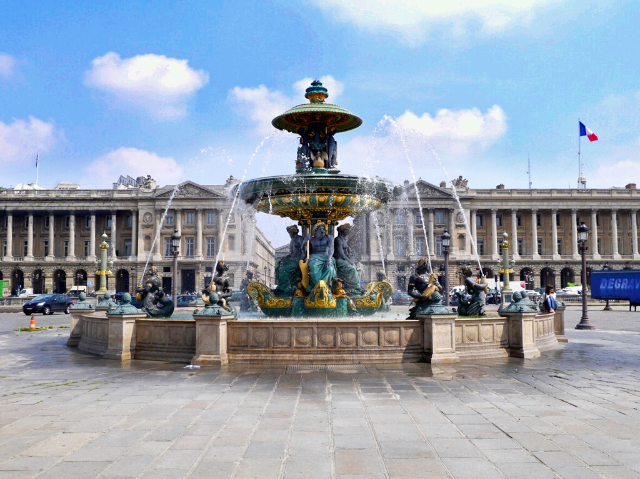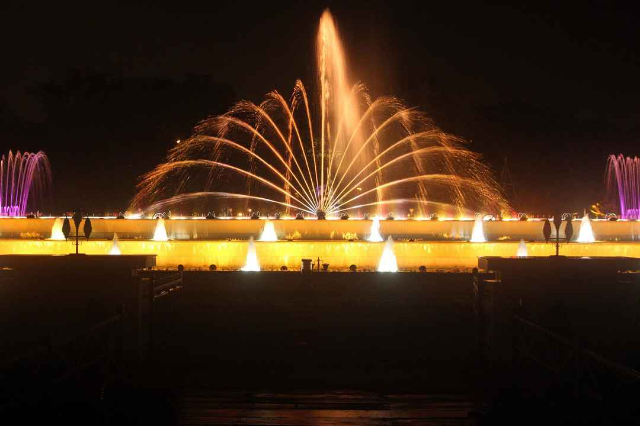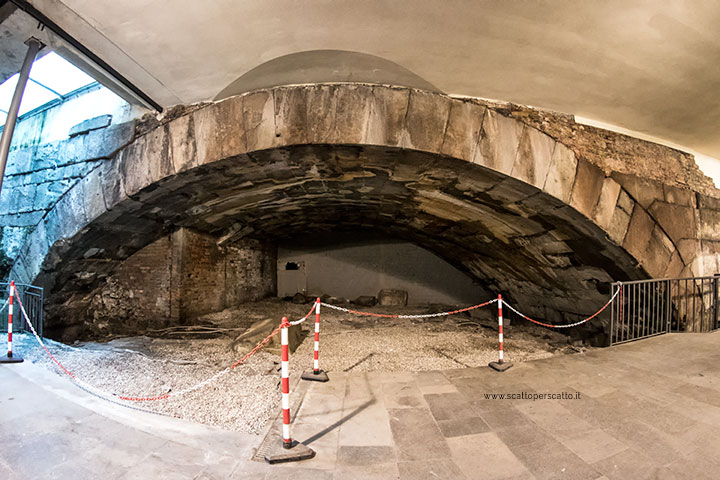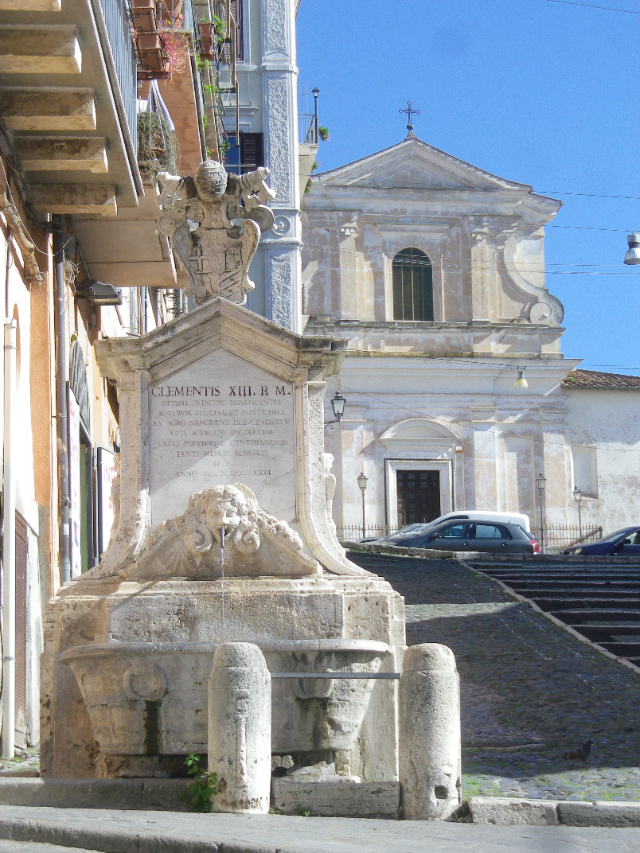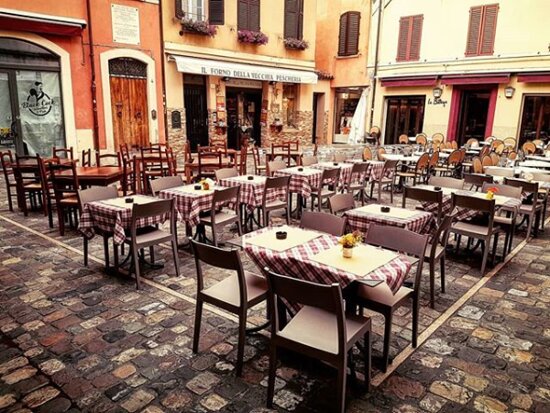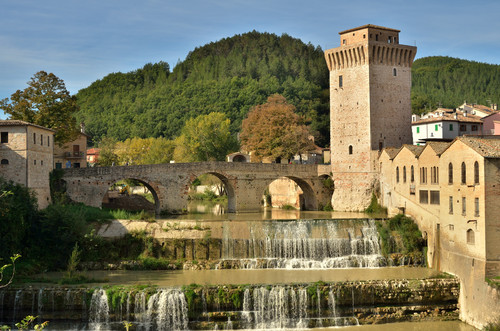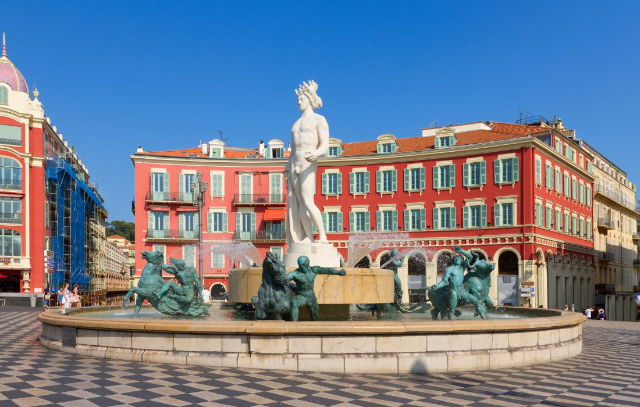The Fontaines de la Concorde are two grand fountains located in the heart of Paris, in the iconic Place de la Concorde. These monumental fountains, designed by Jacques Ignace Hittorff, were completed in 1840 during the reign of King Louis-Philippe and are prime examples of the elaborate architectural and artistic styles that characterized the period.
Each fountain in the Place de la Concorde is dedicated to a different aspect of France’s economic prowess during the 19th century. The south fountain celebrates the maritime commerce and industry of France, depicting figures and motifs that symbolize the oceanic and commercial strengths of the nation. This fountain is adorned with sculptures of figures such as Neptune and Mercury, which exemplify maritime and mercantile endeavors, respectively.
Conversely, the north fountain is dedicated to navigation and commerce on the rivers of France. It features allegorical figures representing the major rivers of France, along with other ornamental elements that highlight the importance of river commerce to the country’s economy during that era. These sculptures not only serve decorative purposes but also honor the technological and economic achievements of France.
Both fountains are remarkable for their size, intricate details, and the integration of different sculptural elements that blend seamlessly with the urban landscape of one of Paris’s largest public squares. The fountains are not only functional pieces of urban infrastructure but also works of art that reflect the artistic and cultural values of their time.
Located between the Champs-Élysées and the Tuileries Garden, the Place de la Concorde is a major public space in Paris, and the fountains add to its historical and aesthetic appeal. They are surrounded by other significant landmarks, making this area a nexus of French culture and history.
Visitors to Paris often stop at the Place de la Concorde to admire these fountains, which are as much a symbol of Parisian and French grandeur as they are of the city’s rich historical layers. For anyone interested in 19th-century French art and architecture, the Fontaines de la Concorde offer a splendid example of how public art can embody and celebrate national pride and achievement.
For further exploration of Paris’s historical and cultural landmarks, consider visiting Secret World for detailed travel guides and articles. Additionally, for those seeking more in-depth insights into the history and significance of Paris’s fountains and squares, this comprehensive guide can provide valuable information and context.

